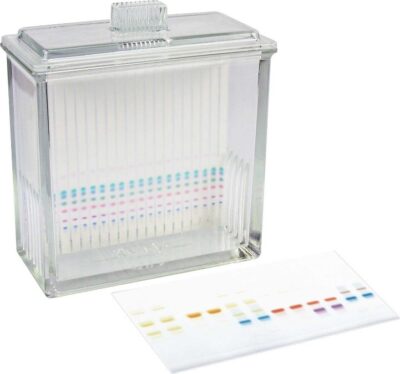 Thin layer chromatography beginners, TLC is a technique used to separate the components of a mixture. It is a type of chromatography, which is a technique that separates substances based on their different affinities for two phases: a stationary phase and a mobile phase. In TLC, the stationary phase is a thin layer of silica gel, alumina, or cellulose that is coated on a glass, metal, or plastic plate. The mobile phase is a solvent that is allowed to flow up the plate by capillary action. The components of the mixture are carried up the plate by the mobile phase, and they are separated based on their different affinities for the stationary phase.
Thin layer chromatography beginners, TLC is a technique used to separate the components of a mixture. It is a type of chromatography, which is a technique that separates substances based on their different affinities for two phases: a stationary phase and a mobile phase. In TLC, the stationary phase is a thin layer of silica gel, alumina, or cellulose that is coated on a glass, metal, or plastic plate. The mobile phase is a solvent that is allowed to flow up the plate by capillary action. The components of the mixture are carried up the plate by the mobile phase, and they are separated based on their different affinities for the stationary phase.
The more polar a substance is, the more strongly it will adhere to the stationary phase. The less polar a substance is, the more strongly it will adhere to the mobile phase. As the components of the mixture migrate up the plate, the more polar substances will travel more slowly than the less polar substances. This is because the more polar substances will spend more time interacting with the stationary phase.
TLC is a quick and easy way to separate the components of a mixture. It can be used to analyze a wide variety of substances, including organic compounds, inorganic compounds, and biological compounds. TLC is also a relatively inexpensive technique.
Here are some of the advantages of TLC:
- It is a quick and easy technique to use.
- It can be used to analyze a wide variety of substances.
- It is relatively inexpensive.
- It can be used to separate the components of a mixture.
- It can be used to identify the components of a mixture.
- It can be used to determine the purity of a substance.
Here are some of the disadvantages of TLC:
- It can be difficult to quantify the results of TLC.
- It can be difficult to identify the components of a mixture if they are very similar.
- It can be difficult to determine the purity of a substance if it is very impure.
Overall, Thin Layer Chromatography beginners will find TLC is a versatile and useful technique for separating and analyzing mixtures. It is quick, easy, and inexpensive to use, and it can be used to analyze a wide variety of substances.

About the Author – Randy Cooper, MBA PCM
Randy Cooper has been in marketing technology more than 35 years. He has a Bachelors of Science in Information Technology, with a focus on web development, from the University of Phoenix. He has a Masters in Business Administration, with a focus on digital marketing, from Liberty University. He holds a Professional Certified Marketer certificate from the American Marketing Association. In 2009, Randy founded Buzz My Biz, a digital marketing agency focused on giving enterprise-level marketing results to small and medium-sized businesses. In 2023 he launched RandyCooper.shop, a print-on-demand store featuring all-over-print products, and BoomerLife.social, a virtual community for boomers. When he isn’t pounding away on a keyboard, he enjoys watching the Atlanta


